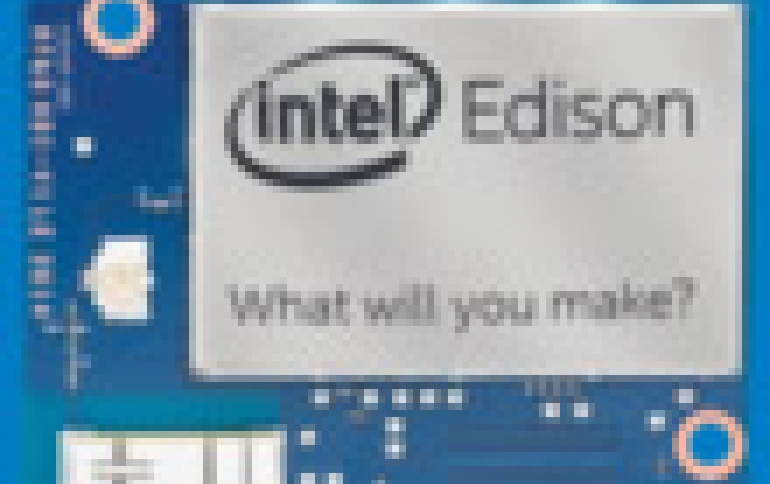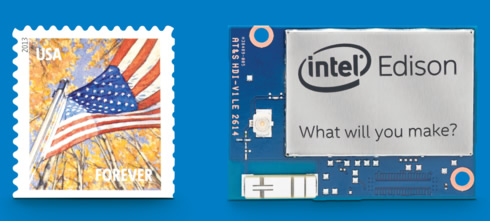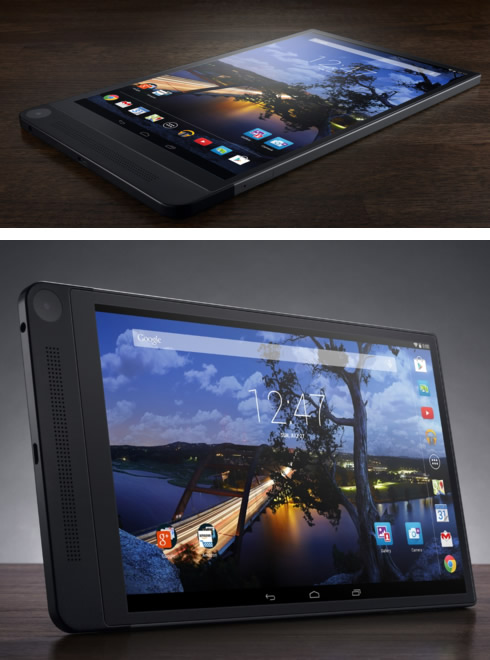
Intel Unveils New Developer Tools, Future Technologies Tablets, Analytics, Wearable Devices and PCs at IDF 2014
Intel CEO Brian Krzanich kicked off Intel's annual technical conference with announcements of new hardware and software developer tools, new products across several technology segments and previews of upcoming Intel technologies. "With our diverse product portfolio and developer tools that span key growth segments, operating systems and form factors, Intel offers hardware and software developers new ways to grow as well as design flexibility," said Brian Krzanich, Intel CEO. "If it's smart and connected, it is best with Intel."
During the keynote, Krzanich was joined on the keynote stage by several Intel executives, Michael Dell, chairman and CEO of Dell, and Greg McKelvey, executive vice president and chief strategy and marketing officer of the Fossil Group.
Intel announced the Intel Reference Design for Android program to offer tablet users a consistent experience based on the latest Android operating system. Intel will help scale the deployment process of Android for tablet manufacturers by providing the software engineering work, streamlined access to Google Mobile Services, as well as support for updates and upgrades to future Android releases.
Intel announced the Analytics for Wearables (A-Wear) developer program that the company hopes will accelerate development and deployment of new wearable applications with data-driven intelligence. The developer program integrates a number of software components, including tools and algorithms from Intel and data management capabilities from Cloudera CDH all deployed on a cloud infrastructure optimized on Intel architecture. Developers of Intel wearables will use the A-Wear developer program free of charge.
The company also announced the first commercial availability of the Intel XMM 7260 modem, now shipping in the Samsung Galaxy Alpha smartphone for Europe and Canada. The Intel XMM 7260 and Intel XMM 7262 modems support one of the industry's fastest mobile standards, delivering Category 6 data rates up to 300 Mbps.
Intel Edison, a postage stamp-size computer with built-in wireless that was announced at CES, is now shipping and available. The platform is designed to enable product development from inventors, entrepreneurs and consumer product designers by simplifying the design process and providing additional cost savings.

Intel also disclosed that AT&T will be the exclusive carrier for the "My Intelligent Communication Accessory" (MICA) bracelet designed by Opening Ceremony, engineered by Intel, that was introduced last week in New York.
Michael Dell and Krzanich previewed an upcoming Dell tablet with first-of-its-kind photo capabilities. The new Dell Venue 8 7000 Series with Intel RealSense snapshot is the world's thinnest tablet and will be available in time for the holiday season. Intel RealSense snapshot is an enhanced photography solution that creates a high-definition depth map to enable measurement, refocus and selective filters with a touch of a finger. It will introduce new capabilities and new ways of using the tablet, and Intel hopes that developers will come up with apps that change how consumers engage with their photos.

Intel Wireless Gigabit Docking, which includes wireless docking, wireless display and wireless charging – was demonstrated via an Intel reference design based on a 14nm next-generation "Skylake" Intel processor. Intel's first PC containing a next-generation chip based on the upcoming Skylake architecture is set to be in PCs and tablets in the second half of next year.
"You should expect a significant increase in performance, battery life and power efficiency," said Kirk Skaugen, general manager of Intel's PC Client Group, during the demonstration.
Processors based on Skylake will succeed chips based on the Broadwell architecture. Broadwell was introduced in tablet-focused Core M chips last week and is in the fifth-generation of Core chips, due to be in mainstream desktops and laptops in the first half of next year.
Intel hopes that Skylake will pave the way for wire-free computing on PCs, Skaugen said.
Physicist Stephen Hawking joined the conference via video to discuss how technology for the disabled is often a proving ground for the technology of the future. In connection with Hawking's video attendance, Intel revealed for the first time a Connected Wheelchair Project, a proof of concept designed by Intel interns as part of the Intel Collaborators program. The project demonstrated how to transform standard "things" into data-driven, connected machines using the Intel Galileo Development Kit, based on Intel Quark processors, and Intel Gateway Solutions for the IoT, featuring Wind River and McAfee security products.
Intel Chief Executive Officer Brian Krzanich set a goal for Intel's chips to be used in 40 million tablets in 2014, up from 10 million the previous year.
Intel is actually paying tablet makers some of the initial engineering cost of developing tablets using its chips, hoping those companies will continue to use them for future devices.
Krzanich said he hoped to avoid using costly subsidies when he sets a new goal for smartphone chip shipments for 2015. Intel's upcoming Sofia smartphone chip includes a 3G version for low-cost devices in developing countries like China as well as a version with 4G for the United States.
IDF preview
During the IoT mega session this morning, Intel Vice President Doug Davis will address interoperability and security challenges and describe Intel's integrated hardware and software building blocks for edge-to-cloud IoT solutions. He will disclose that Intel is collaborating with AT&T, Cisco, GE and IBM to create solutions utilizing their platforms and Intel's building blocks. The companies will announce joint products that are available today in addition to future product plans.
In the Intel Edison, Wearables and New Devices mega session this afternoon, Intel Vice President Mike Bell will preview several Intel Edison-powered prototype devices, including a 3-D printed interactive garment and a braille printer and embosser. Meridian Audio, a top high performance audio and video component manufacturer, will also discuss how Intel Edison contributes to advancing its wireless audio product offerings.
During the Software Developer mega session this afternoon, Intel Vice President Doug Fisher will introduce tools that help developers create software easier and across ecosystems. He will also talk about the ease with which OEMs and ODMs will be able to build a Windows- or Android-based device using customized tools and reference designs from Intel.
In the Mobile Technology mega session this afternoon, Intel Vice President Hermann Eul will challenge developers to play a role in solving the world's most critical problems and advancing societies across the globe, in particular in developing countries, through innovations for the mobile device. He will highlight the hardware, software and communications technologies.
During the Data Center mega session tomorrow morning, Intel Senior Vice President Diane Bryant will discuss how data centers are being re-architected, driven in large part by the rise of the digital service economy. This session will include an update on future Intel silicon photonics products and details on how Intel is tailoring products for individual data center customers.
In the PC Reinvention and Innovation mega session tomorrow morning, Intel Senior Vice President Kirk Skaugen will discuss how developers can address the 600 million unit global opportunity of 4-year-old and older PCs that could be replaced with exciting new form factors across multiple operating systems. Skaugen will update developers on ChromeOS and Intel Wireless Display momentum, and as well as the Alliance for Wireless Power wireless charging consortium.





















